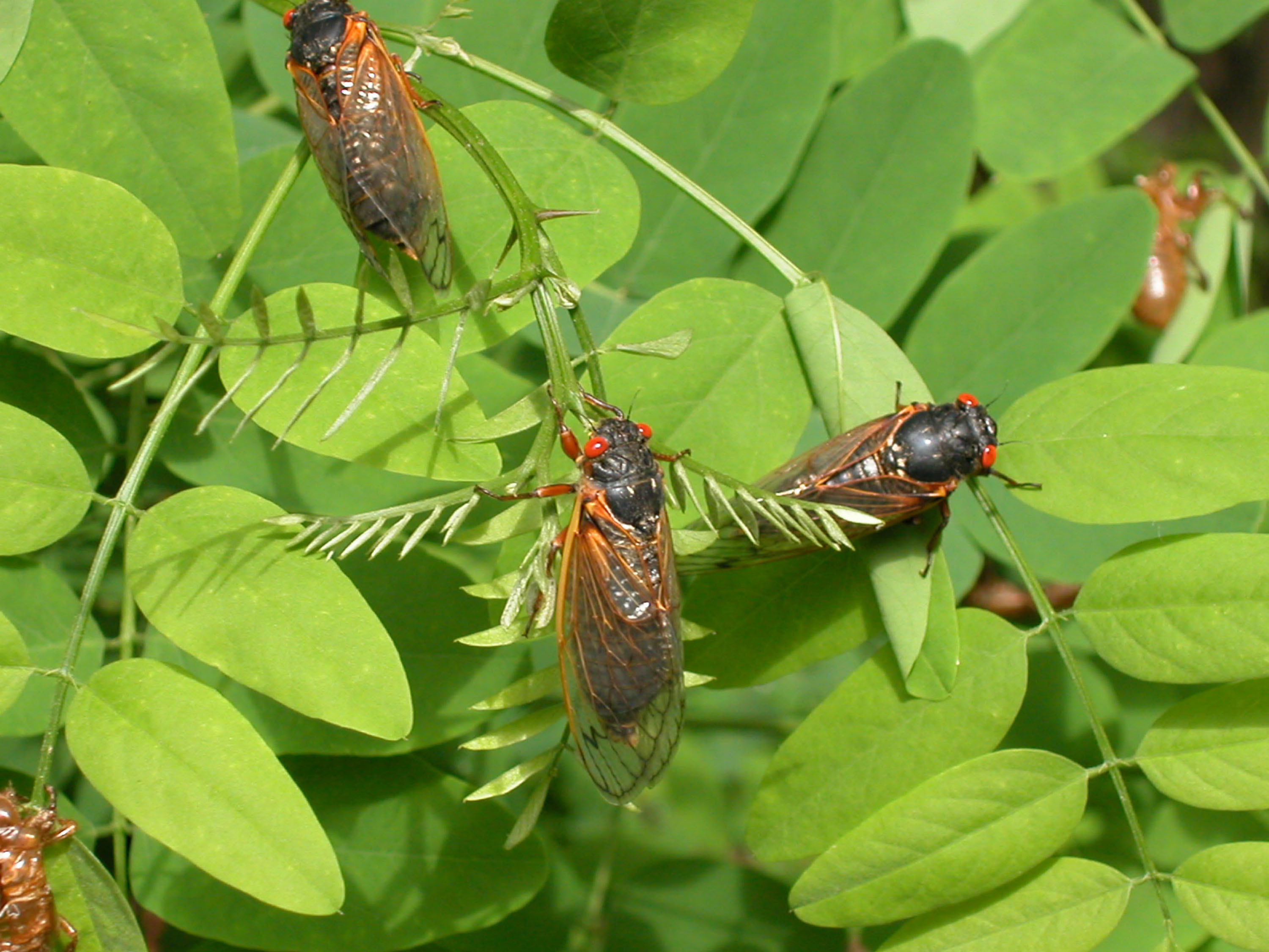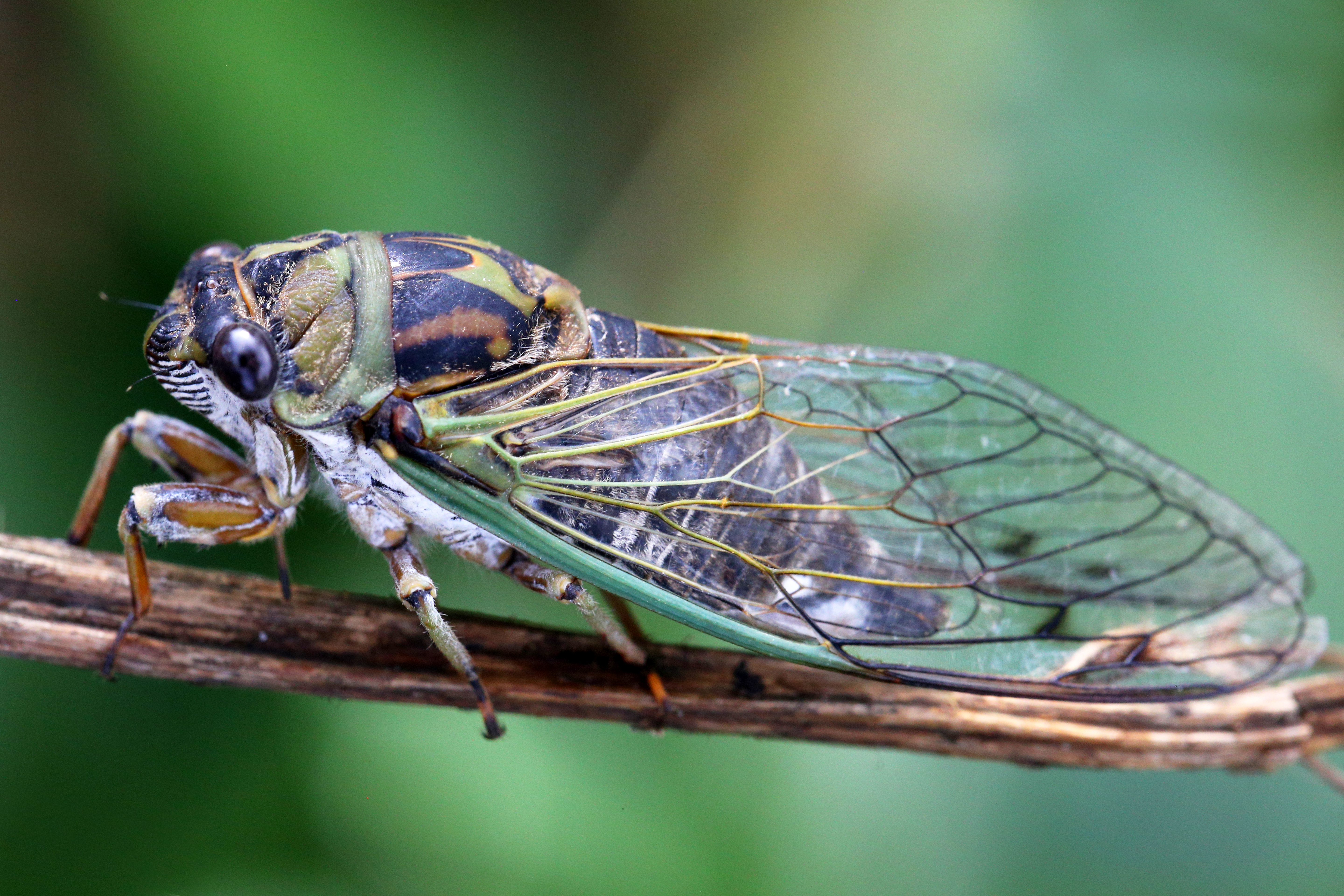You can run. You can hide. But it's very unlikely you'll be able to avoid the billions of periodical cicadas set to emerge from the ground all across Illinois this spring and summer.
"They've been underground for 17 years," Allen Lawrance, associate curator of entomology at the Peggy Notebaert Nature Museum in Chicago, said. "They have a synchronized emergence where they all come out at the same time ... it's going to be pretty exciting."
But it's not just the 17-year cicadas that are expected to crawl up from the ground. According to Lawrance, two groups of cicadas — one known as Brood XIII, the other as Brood XIX — will surface at the same time in Illinois, creating a rare event that hasn't happened for 221 years.
Brood XIII will emerge "all across Northern Illinois," while Brood XIX will be in the southern part of the state, Lawrance said, with some parts of the state seeing both. And while different broods of periodic cicadas typically emerge most years across different parts of the U.S., it just so happens that this year, the crown belongs to Illinois.
"We're at the center of the explosion this year," Lawrance said. "It's pretty rare to have two broods — one of 17-year cicadas, one of 13-year cicadas — emerging at the same time in an area where they overlap a little bit."
How loud will it actually be?
Periodical cicadas are smaller and different in color than the annual "dog-day" cicadas Illinois sees in July, Lawrance said. Periodical cicadas don't bite or sting, and they're harmless to humans, animals and most plants, Lawrance added.
But they are noisy.
Feeling out of the loop? We'll catch you up on the Chicago news you need to know. Sign up for the weekly Chicago Catch-Up newsletter.
Brood XIII specifically, which will primarily be in the Chicago area, is expected to be a "pretty loud one."
"Think of it like a chorus," Lawrance said. "The more voices you have, the louder the sound. And this brood that emerges in Chicago is known to be a pretty dense group."
An article from the University of Illinois Extension stated that the northern Illinois brood, set to emerge in late May 2024, has a reputation for being the "largest emergence of cicadas known anywhere," due to the brood's size.
"During the 1956 emergence, [epidemiologists] counted an average of 311 nymphal emergence holes per square yard of ground in a forested floodplain near Chicago," the article said. "This translates to 1½ million cicadas per acre. In upland sites, they recorded 27 emergence holes per square yard, translating to about 133,000 per acre."
In 1990, "there were reports from people in Chicago having to use snow shovels to clear their sidewalks of the dead cicadas," the article went on to say.
According to Lawrance, the "singing" — a form of communication, and a mating call — from such a large group will sound like an "endless hum."
"You'll just hear kind of a continuous droning sound in the background," Lawrance said. "They have this little organ that vibrates really fast. Think of it like shaking a piece of metal, or something like that. And then they have those air sacs behind them to amplify it, just like a violin."
What are the cicadas doing underground?
For the past 17 years, billions of cicadas from Brood XIII have been living underground, tapping into fluid from plant roots, Lawrance said. Once they emerge, they'll be around for between four and six weeks, Lawrance added.
How and when they emerge in such a harmonious way, though, is a bit of a puzzle.
"That's kind of a big mystery," Lawrance said. "How are they so synchronized to do this? At the same time? There seems to be something that's genetically or physiologically controlled, so they just know instinctually to do this."
And once they burrow up, there's "really no escaping them," Lawrance said, especially on and around trees, where "piles" of cicada shells can are expected after the insects have feasted on fluid from branches and woody shrubs.
"You're just going to see them sort of flying around, hanging out on trees, and you're going to hear them wherever you go," Lawrance said.
That is, until they die and get composted back into the ground. Or get eaten.
"Everything eats them," Lawrance said. "The periodical cicadas' 'life strategy' is by emerging all at once. Everything that eats them can eat as many as they want, and there are still more than enough cicadas left behind to continue the population."
Periodical cicadas, Lawrance said, are a "petty tasty snack" to squirrels, birds or snakes. Dogs can eat them too, Lawrance added, in moderation.
"As far as insects go, they're very large and meaty," Lawrance said. "They have a lot of nutrients there."
Which areas will see the most?
According to Lawrance, the cicada distribution will be patchy.
"Not every neighborhood is going to be as dense with them as others," he said. "One area may be slightly more quiet, and you'll hear them in the distance. And then you go to the next neighborhood, and it's hoppin', and they're everywhere."
There is one determining factor, however: If they were there before, they'll be there again.
"So, which neighborhoods you would expect to find them in will depend on where they were last time they emerged," Lawrance said. "If the soil had been completely dug up and replaced due to construction, there may be fewer cicadas there. But if they were there last time, chances are, they'll still be there."
The same goes for the next 17 years.
After they emerge this spring and summer, female periodical cicadas will lay their eggs on the tips of tree branches. Eventually, those eggs will hatch and drop down into the soil, Lawrance said. The nymphs then burrow underground, and their 17-year cycle of life begins again.
What exactly are we supposed to do with them?
Not much, Lawrance said.
"You should definitely not try to remove them from an area with billions," he said, adding that they'll get composted back into the soil on their own.
"That's kind of the great role they play within our ecosystems, is they spend a lot of time concentrating nutrients from a really good food resource that is the xylem and plants," Lawrance said. "And then, when they emerge en mass, they return those nutrients to the soil in one big group."
Those nutrients could result in a "big boost" in plant growth over the next couple of years, Lawrance added.
"All the animals that are around when they emerge are going to be very full and happy," Lawrance said. "Plants are going to get a boost in fertilizer for a little bit..when we have extreme weather events, like a drought, that cicada emergence happens at the right time that can provide a really valuable food source when nutrients are very scarce."
According to Lawrance, those nutrients could also be used in home gardens.
"If you want to fertilize your garden, or save on fertilizer for your garden, you could just throw some piles of cicadas in there as they decompose," Lawrance said.
'There's no stopping them'
According to the Environmental Protection Agency, pesticides are "generally ineffective at keeping cicadas away."
"So many cicadas emerge at once that more will inevitably move in," the agency said. "Spraying also doesn’t make sense because cicadas are generally harmless. Applying pesticides to control cicadas may harm other organisms, including animals that eat cicadas."
With such a large number, there will be no where to run come June, Lawrance stressed.
"There's no stopping them. They're here. It's temporary, and there's really no escaping them," he said.
And though some may not look forward to the bug invasion, the phenomenon can still be experienced -- or listened to -- from afar, Lawrance offered.
"It's just really a unique experience," Lawrance said. "A good gateway to learning how to appreciate them is to start with that music that they make so you can hear them. It's kind of like learning to appreciate an orchestral piece. We have multiple species that each have different songs as well. So throughout time you just start to listen and say, 'Oh, that one sounds a little bit different. I wonder what that is.' And then you can start to appreciate them without having to get too close and getting grossed out by them."




